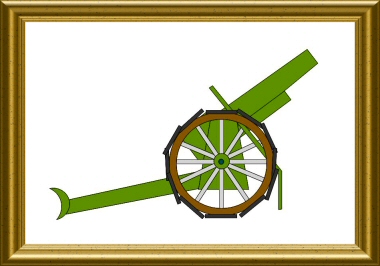|
Contributor :
|
Location :
Australia
Canberra, ACT
Australian War Museum
Coordinates :
Lat : -35.28230 / Long : 149.14890
|
General comments on this surviving gun :
Identical items in the same location :
1
Items covered by this file :
1
|
|
Historic context :
Since the early days of the WW1, Germany confirmed the high utility of long range heavy fieldguns in the operations. This specification being only met by the few batteries of 13 cm K 09 and even rarer 15 cm KISL guns, the two German Industry tenors Krupp and RheinMetall are required to launch the design of a heavy 15 cm fieldgun, mobile and modern, able to reach the longest possible ranges.
The prototypes of both manufacturers were tested in 1915, while the front units were delivered with stop-gap weapons such as the '15 cm i.R. L/40' based on existing Navy barrels, and demonstrated satisfying very similar properties. These were confirmed in service in a test battery engaged in Verdun and on the Somme. Both designs were therefore adopted under the names of '15 cm K 16 Kp' for the Krupp gun and '15 cm K 16 Rh' for the RheinMetall one. They were delivered to the units from 1917, and instantaneously demonstrated their uncomarable superiority against all the Entente comparable weapons, this fact remaining untouched until the end of the war.
The exceptional range length of these heavy field guns, over 22 km, made the safe from counter-battery fire, unless railway heavy power artillery was used. With their high power 15 cm shells, they proved particularly efficient during the German 1918 offensives where they caused heavy damages to the Allies headquarters and logistic centres, desorganising the defenses and contributing to the rapid success of the assault troops.
These weapons mobility was good, and the setting in firing position quick. The Krupp gun had been designed from the beginning for mechanised towing in two loads or one single load, and if the somewhat lighter RheinMetall one was originally designed for a horse towing in two separated loads, it was quickly adapted too to the transportation by mechanized tractors
These weapons only became significantly present on the front from the end of 1917. As a total, RheinMetall only produced about 50 15 cm guns, whereas Krupp manufactured 370 of them. In November 1918, there was still respectively 32 and 214 such guns in service. 28 Krupp guns could be saved by Germany after the WW1. They were put back into service in the Whermacht and participated to the WW2 fights.
|
Technical data :
- Complete description : 15cm Krupp gun M 16
- Design year : 1916
- Calibre : 149.30 mm
- Weight in firing position : 10140 kg
- Weight for transportation : 2 distinct loads (rohr wagen 8290 kg & lafette 6115 kg) with automobile traction
- Tube length in calibres : 43.00
- Grooves : 48 7 degrees
- Projectile weight : 51.55 kg
- Initial speed : 749 m/s
- Fire rate :
- Range : 22800 m
- Elevation range : 0 to +42 degrees
- Direction range : 8 degrees total range
|


